
Today, as part of announcing watchOS 9, Apple rolled out a massive slate of new sports and fitness features including running power, triathlon mode (including automatic transitions), custom workout support, and plenty more.
Apple’s annual Worldwide Developer Conference (WWDC), which is traditionally held in June, is where the company outlines the slate of both platform and developer changes coming to each of their platforms (iOS, iPad OS, watchOS, etc…). For this post, I’m going to be focusing on the Apple Watch specific ones, which utilize watchOS. WatchOS is the platform that Apple Watch hardware runs.
Now, while these features are announced today, they won’t hit public release until usually the September timeframe. It’s between now and then that developers can utilize the time to update their apps using beta versions of the software. And then typically, Apple releases both new iPhones and new Apple Watch editions in the September-ish timeframe.
Of course, somewhat confusingly for consumers, the numbering for watchOS versions doesn’t actually match the recent Apple Watch versions, for context:
Most Recent Apple watchOS 8: Released in October 2021
Most Recent Apple Watch 7: Released in October 2021
Upcoming Apple watchOS 9: Approximate release September 2022
Upcoming Apple Watch 8: Approximate/assumed release September 2022
In any event, keep in mind that WWDC is primarily about developers. Just like Google and Microsoft’s respective developer conferences, thus, the features and focuses here are heavily developer-driven. That said, each year Apple has shifted more and more of their public keynote towards outlining consumer features as part of the device platforms. And that’s certainly true this year as well, where the overwhelming majority of the keynote was focused on consumer features, not developer ones.
Apple has announced that this update will come to the Apple Watch Series 4 and higher this fall, which means that it’ll also force Apple to decide on a successor to the Apple Watch Series 3 as their budget watch (priced at $160ish).
New watchOS 9 Features:
Now, while Apple always announces new hardware bits as part of the new Apple Watch editions, most of the software features tend to be outlined here in June at WWDC, rather than September. So basically at this juncture we tend to know about 80-90% of the new software features for the next version of Apple Watch. However, only a small portion of these are highlighted in the keynote itself.
Instead, over the coming days/weeks/months new watchOS beta editions are going to be released and updated, and it’s then that we’ll see even more detail on how things work.
With that, let’s dive into it, first with the general features:
– Adding Four new watches faces: Astronomy display with current cloud coverage, ‘Lunar calendar’ with special events included, ‘Play Time’ is a more playful watch face, and ‘Metropolitan’, with a dynamically stretching font.
– Adds refreshed SIRI UI, and new banner notifications design
– Podcast app lets you discover and follow new podcasts
– Redesigned calendar app
– Support for dogs & cats in Portrait Faces
– Expanded keyboard language support
– Kids can now control Home devices from their wrists (if approved)
But of course, you’re probably here for the sports and fitness features. So with that, we’ll start in the sports side and those specific to the Workout App, which is the native app on the Apple Watch that you start a workout from:
– Workout App: Adding three new running form metrics for efficiency: Vertical Oscillation, Stride Length, and Ground Contact Time
– Workout App: Can now see heart rate zones during the workout zones
– Workout App: Can now create new custom workouts, including repeats based on distance or time intervals
– Workout App: New alerts for heart rate zones, cadence, and other metrics (not shown yet)
– Workout App: New Running Power support, now natively tracks running power
– Workout App: Revamped data pages with more data per page
– Workout App: Can now race against past routes, which are saved to workout app
– Workout App: Triathletes gets workout support including auto-switching between swim/bike/run and triathlete tracking time
– Workout App: Adding kickboard swim detection
Wow. That’s a massive increase in sports and fitness features. Starting off with the running power pieces, this is natively tracked at the wrist, joining companies like Polar and COROS. And in the process, yet again illustrate Garmin’s miss last week on not doing it natively on the wrist and simply using a Connect IQ app in the Forerunner 255 & Forerunner 955. You can see the running power here:
Of course, we don’t know yet how accurate this is, but again, there is no standard on accuracy or how to measure running power. And anyone claiming their device is more accurate than another is simply trying to sell you something. At the moment, the best we can hope for is consistency to itself.
In conjunction with that, Apple’s added running efficiency metrics, including Vertical Oscillation, Stride Length, and Ground Contact Time. While stride length isn’t typically that complex or new in watches, GCT and VO are more complex – and I believe the first time we’ve seen it from the wrist. Most other companies measure it at the chest strap or pod. Apple created animations demonstrating the ‘complexity’ of this and their algorithms, which they say use machine learning and sensor fusion by leveraging both the accelerometer and the gyroscope to separate out torso movement from arm swing.
Following that, Apple rolled out a slate of new features including heart rate zones:
As well as the ability to create alerts on different metrics. And with that, also fully custom workouts using your own distance or time intervals:
After that they showed what is essentially a Virtual Pacer type function, where it’ll snap to frequently used routes to show how you compare against those, allowing you to race against your last or best time:
However, for triathletes, the biggest news here is a true triathlon mode, including tracking not just transition times but automatically transitioning from swim to bike to run. We saw Wahoo introduce this on the Wahoo RIVAL watch nearly 18 months ago, but no other companies have followed suit, till now:
Next, moving into more general health and fitness aspects, starting in iOS 16 the Fitness app will be available to all iOS users, not just Apple watch users. That means everyone can track general activity data.
Next, Apple is adding support for tracking sleep stages. This includes how much time is spent in each stage:
Apple says they clinically validated this against polysomnography with the largest study ever assembled. But didn’t include a link or details on what that is. Further, if a user signs up for Apple’s Heart & Movement Study, it will now contribute sleep stage data via the app.
Apple then announced a huge new feature: Atrial Fibrillation history. This now tracks detailed specifics about your heart when in AFib, via AFib history, so it shows exactly how much time you spend in AFib, as well as trends around which day of week/month/etc.
Apple Watch received FDA clearance for that just hours prior to the event.
Next, Apple Watch will now track medications and help log those medications quickly from the watch itself, as well as remind users to take medications by alerting them based on their med schedule.
The companion iPhone app can also scan in your medication’s label to automatically figure out the name and schedule. It’ll also automatically notify you of any interactions, like not drinking alcohol or any medications that shouldn’t be taken together.
And this is also sharable within the family to allow others in the family to assist with medications.
Going Forward:
This is by far the most significant sports and fitness-focused update the Apple Watch has seen in years. Not only is Apple adding in more common features like custom workouts, they appear to be going straight to the core of endurance sports companies like Garmin/Polar/Suunto/COROS, with the addition of full triathlon support, running power, running efficiency metrics, heart rate zones, and more.
Further, the addition of full sleep stages might also imply longer battery life in an Apple Watch Series 8 down the road. Or, it might not. Either way, it implies more data to compete against their more data-focused competitors.
I’m looking forward to trying this out though, and seeing how some of these features stack up in real-life. Stay tuned!
Thanks for reading!
FOUND THIS POST USEFUL? SUPPORT THE SITE!
Hopefully, you found this post useful. The website is really a labor of love, so please consider becoming a DC RAINMAKER Supporter. This gets you an ad-free experience, and access to our (mostly) bi-monthly behind-the-scenes video series of “Shed Talkin’”.
Support DCRainMaker - Shop on Amazon
Otherwise, perhaps consider using the below link if shopping on Amazon. As an Amazon Associate, I earn from qualifying purchases. It doesn’t cost you anything extra, but your purchases help support this website a lot. It could simply be buying toilet paper, or this pizza oven we use and love.


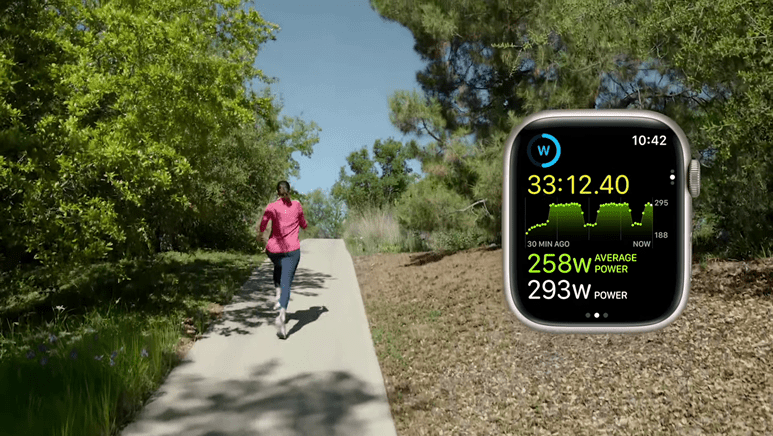
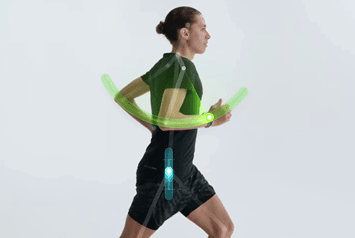
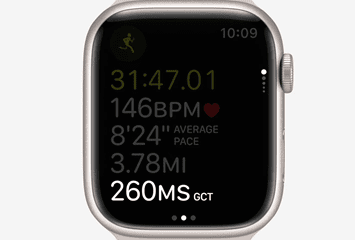
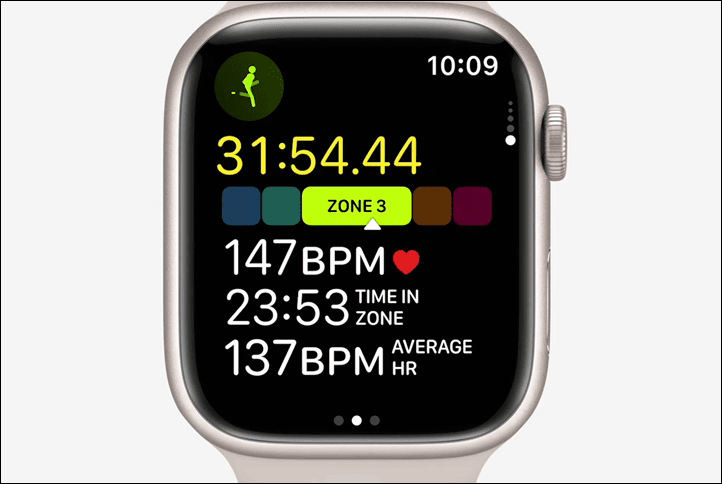

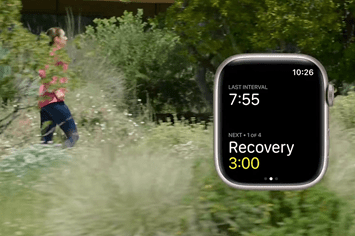
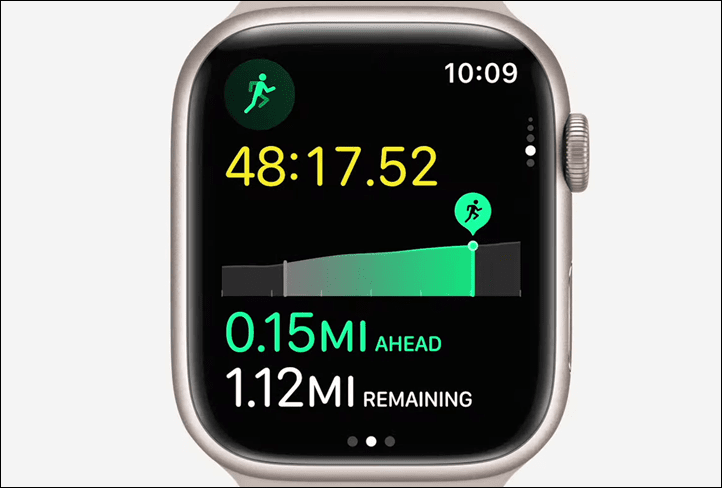
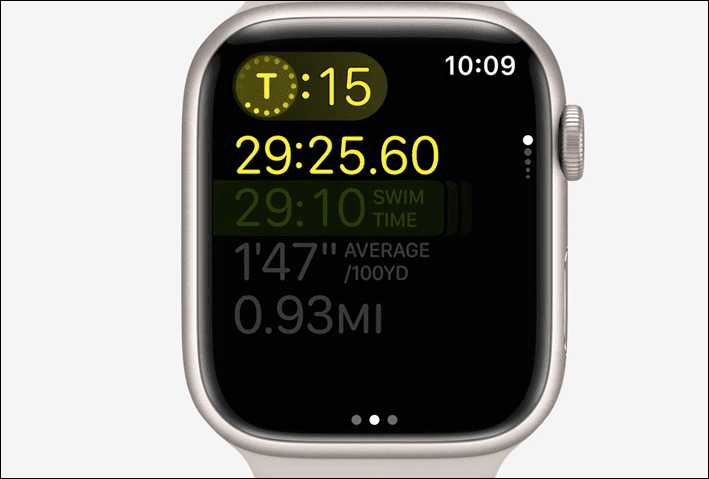
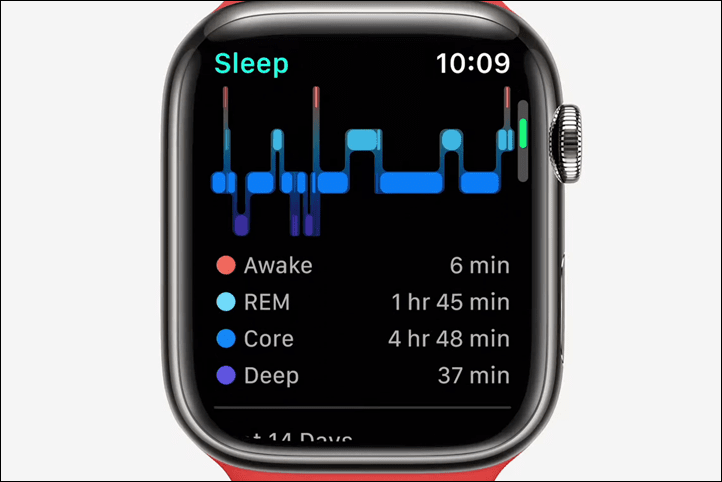
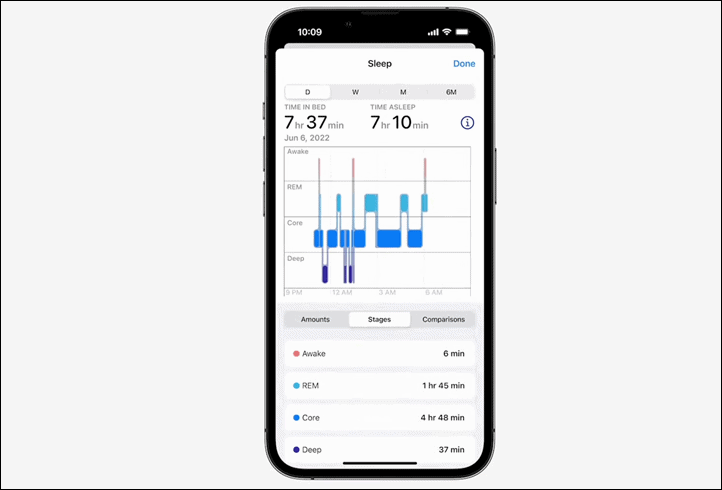
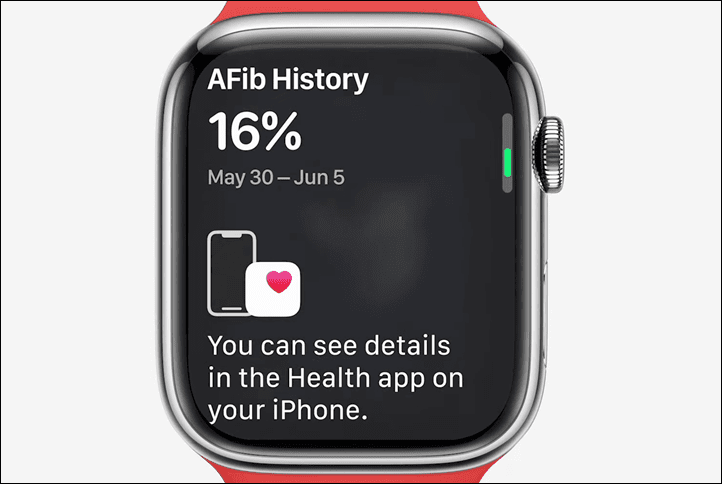
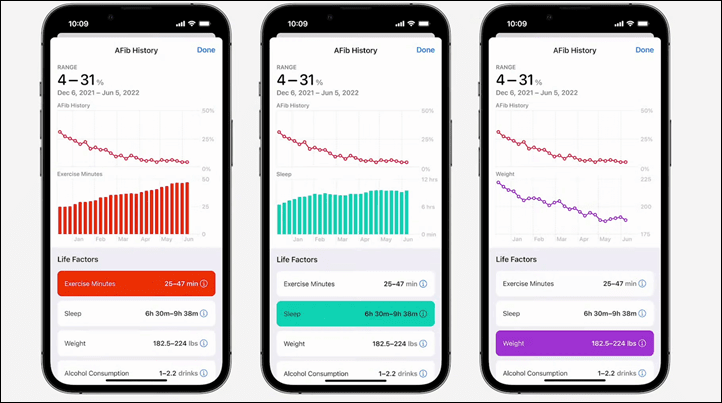
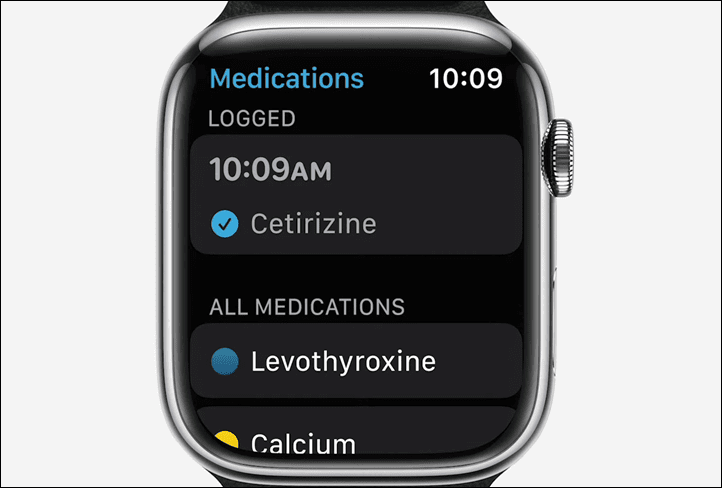
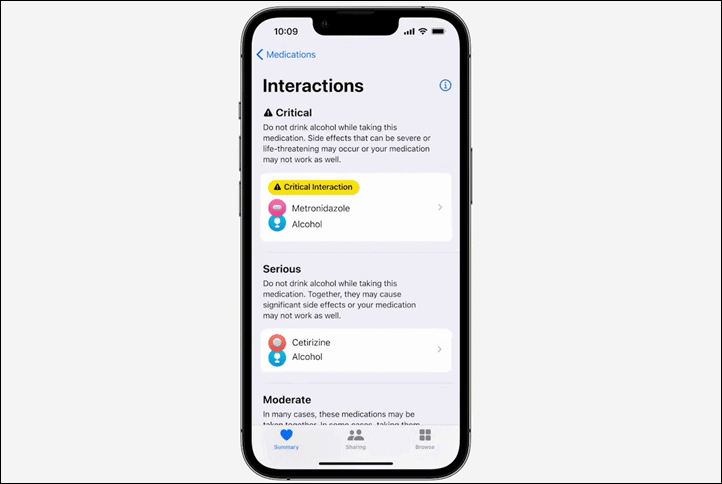
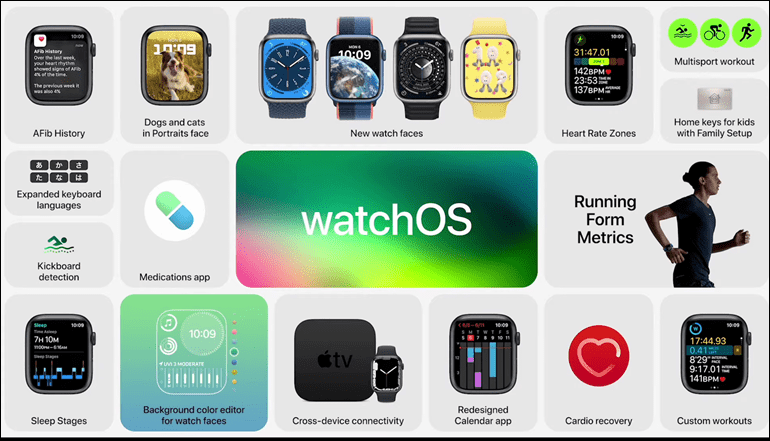

















No cycling power though, right? Or is that a yes with tri mode?
Thank you on good summary, no news on cycling power meter connectivity, and how the recovery works in Apple Watch.
GPlama spelling of routes? 😄
“Can now race against past routs”
Maybe people will finally stop the ridiculous claims of “if you want a running watch with smartwatch features buy a Garmin, if you want a smartwatch with running features buy an Apple Watch.” IT IS A REAL RUNNING WATCH, people.
Not with that battery life and minimal physical controls.
It’s certainly not “ridiculous” to say Apple Watch has been a Smartwatch with basic running features, and Forerunner is an advanced running watch with basic Smartwatch features. Those are both 100% accurate.
This update certainly helps close that gap.
No, it’s not. The fact that I would have to buy an iPhone to use it, bad battery life and awful touch controls haven’t changed, so it’s definitely still a smartwatch and not a sports watch.
Dude. Buy what works for you and get over yourself. You are not special.
BTW —— do you endurance Experts and Studs have any idea how many world class marathoners and triathletes often just swim, bike or run without the $600+ “I am cool and serious” jewelry on their wrists and bikes? 😂. Get real and get over yourselves. I mean REALLY!
The battery life is a complete show stopper for me. No features can compensate for that.
It has enough battery for a 6-7 hour HIM. Sure, it won’t last the full distance unless you are a top athlete, but for everything else it’s actually plenty of battery.
With the launch of the Epix Gen2, the clock is ticking for Apple to match/meet Garmin’s battery life performance. It may not be this year, but possibly next I would expect a sports watch mode that allows for 12-18 hours GPS battery life similar to an Epix. I could also see Apple’s watch supporting multiband this year. If Apple can nail the lower power modes and offer SOME more tactile buttons, it’s going to cause serious consolidation in the GPS watch landscape (COROS+Suunto+Polar? Or Garmin acquiring one of the three? Or Apple?).
“It has enough battery for a 6-7 hour HIM.”
Right, but it’s easy to forget that not everyone is using these watches exclusively only for relatively short running events. As soon as you start using an AW for a long dayhike, for example, the battery life is crippling.
Not really on the Apple Workout app. Obviously, just about any Garmin is better but not massively so in all use cases. If you are listening to music you’ll get about 6-7 hours on the AW and 9ish on the Epix. The native workout app, without music, will get you, well, more, maybe 10 hours +/-.
So, obviously, multi-day without a charger is out but for 95% of us, who don’t do major endurance events, it’s enough.
It’s just charging it everyday that’s a pain.
But not enough to get to the start of your HIM as well. The Fenix 7 would manage a HIM if you charged it before your long haul flight then sat by the pool for two days before the race. And you can get sleep stats during that time too to ensure you’re prepared for race day.
I was really really hoping for some sort of recovery data that would be used on activity goals. They’ve got to stop with pushing people to exercise 7 days a week no matter what.
It’s not really. With the fenix, I say to myself after 5 days “maybe I’ll charge it now”. Apple Watch charge or die every single day. Nope.
I have the S7, I can get two days out of it.
With the new fast charging, I have not worried about charging the watch at all.
Apple is getting closer to satisfying 90% of the users out there. If I were Garmin, these announcements would worry me.
It is widely believed that Apple is going to offer a new variant of the Apple Watch this September (in addition to a regular “Series 8”) that is some type of rugged / sports version, sorta a “Fenix” style Apple Watch. While I doubt it will have anything approaching Epix 2 like battery life if such a new Apple Watch is released I think it’s likely larger size will allow for a significant increase in battery life for sport etc. that makes these new triathlon and other features make more sense.
How accurate will all these metrics be considering that Apple does not measure Heart Rate on a per second basis?
Finding information on the exact timing of the intervals is extremely difficult so the intervals are probably long. This is what Apple documentation has to say:
“Apple Watch measures your heart rate throughout the day when you’re still, and periodically when you’re walking (Apple Watch Series 1 or later). Since Apple Watch takes these background readings based on your activity, the time between these measurements will vary. Apple Watch also calculates a daily resting rate and walking average by correlating background heart rate readings with accelerometer data when sufficient background readings are available.”
If they do increase the Heart Rate recording to per second, it will further reduce the already poor battery life.
I hiked with Apple Watch multiple times. I typically get something like 7-8 hours of activity recording before the battery drops to 10%. So you just bring an Apple Watch-compatible powerbank and charge it. Same with Fenix to be honest – as soon as you start using maps, the battery life drops drastically
Agree this isn’t *good* for Garmin, but very manageable.
Very reminiscent of when Apple first added GPS in 2016 — series 2. Many then concluded Garmin watches would go to zero.
Since then Garmin’s fitness business has roughly doubled [despite massive decline in fitness trackers] + outdoor business [fenix] has roughly tripled.
Just a big growing market benefiting all. Catering to hardcore hobbyists more than mass market products is a durable business.
They barely manage to get a full day’s battery out of it. You likely cannot wake up with a fully charged Apple watch, use it during the day periodically, and go to bed and have it last the night recording your sleep.
That is completely unacceptable in a marketplace where companies like Garmin are now offering watches that can record an activity longer than an Apple watch will last just being a fashion statement on your arm, and will now last TWO WEEKS on a charge if you’re not recording activities.
Even my ancient VA3 with a kinda-dead battery lasts several days, and that includes recording an hour long activity most of those days.
Nearly every sport smart watch on the market for the last half decade has offered better than that. Hell, my Basis watch had multiple day battery life, and it was the first watch to do 24×7 heartrate monitoring.
Until the Apple Watch lasts more than two days on a charge, it’s just far too inconvenient.
I’m assuming you didn’t get that quote from Apple, someone has cut off the first few words of the first sentence and omitted the bit before about constant monitoring.
The Apple page that includes that quote is pretty clear that it is constant monitoring of heart rate whilst exercising (using the app):
link to support.apple.com
I’d assume the new metrics will likewise be constant.
But they do in workout. Apple Watch has the best wrist based hearth rate tracking.
Does help that the straps means you wear the watch further from the wrist that most users don’t do with other watches, but yea it’s still very good despite its sample rate
I will 100% buy a rugged version of the AW if it comes out this September, day one. I’m waffling between AW-only and AW/945LTE combo. Probably going to sell the 945LTE and just do AW for now.
But I really miss the buttons and (especially!) the battery life. Battery on the AW is a huge bummer for someone who spends 9-11 hours a week training.
Interesting comment and one that I’ve been wondering about since I got my first Apple Watch (rev. 4). All of my exercise training, for years, emphasized that taking a rest day occasionally was not just smart but recommended. I was very surprised when Apple’s “fitness” programs all emphasize “streaks” of unbroken, daily exercise.
Yours is literally the first comment I’ve seen (in over three years) about Apple’s fixation on “streaks”.
Not just the total time for activity but having to charge daily…
Example, if you randomly decides to go on an evening or night run… you maybe out of luck battery wise.
And Garmin should worry and step up their game.
watchOS 9 will require Apple Watch Series 4 or later. No support for the underpowered Series 3.
link to apple.com
I’m pretty sure that Apple will finally discontinue Series 3 altogether, leaving, for example, SE as the budget offering, S6 as the mid-tier and whatever they announce in September as the top-tier model.
My jaw literally dropped when Apple showed running dynamics, native running power, multiple data screens and triathlon mode with seamless transitions.
Even now, without power, it easily makes Apple Watch one of the best beginner choices for triathletes – until full IM distance, as the battery life is not there yet.
Ray, do you think that If Apple doubles down by adding BLE power sensor support, it will just destroy Polar’s/Suunto’s budget segment?
Pavel,
I completely agree, jaw-dropping announcement. I don’t see how Polar/Suunto/ Coros remain relevant after September. While Garmin offers enough variety to cover a lot of people’s bases I’m sure even their mid-tier options will suffer. I have been on the fence converting from Polar to the AW, but now I’m going to do it.
AW just offers so many daily conveniences + more native running metrics and functions… it really is the best watch for most athletic iPhone owners.
power sensor support is done at the app level.
ismoothrun has done bike power and stryd power for a couple of years, hasn’t quite destroyed Polar and Suunto yet ;-)
Sorry, I should have expanded that comment about them not remaining relevant. I’m referring to the $300 range of watches and down are where the competition is most fierce (bread and butter watches). Most people in that bracket (I assume) are looking for ease of use and convenience, all of which AW can now offer out of the gate as opposed to the end-user having to download needed application to use power, intervals, zones, etc…
Also the smaller sports watch companies will remain relevant as many users are looking for a round face, a more durable choice and longer battery life to name a few differences. I’m guessing that Polar (more so than Suunto or Coros) will loose those customers who are looking for a less expensive watch as AW will offer not just the daily convenience of a smart watch, but the necessary and “nice to haves,” i.e., power from the wrist, which models such as the Pacer/Pacer Pro offer.
Except the fact you can’t use it with Android ;)
Don’t underestimate the power of Strava and the like. I’m heavily committed to Apple’s ecosystem and in general their ‘walled garden’ doesn’t bother me, but until Apple allow sharing of data with third party sites (without involving pagan rituals) or at least provide a decent native analysis platform akin to Garmin Connect, then I think they themselves are holding back the threat they could be in that segment.
I’ve wondered for awhile how Suunto has managed to keep hanging on independently (as in, not absorbed in one of the other brands, I think they do have a parent company though?) but I know they have a very loyal hiking/mountaineering type crowd that I think keeps them in the market to some degree…
Polar on the other hand, with their very robust full fitness ecosystem and decades of experience in tracking fitness and sports, is not in danger (yet) by this (any more than they are by their own short-sightedness with or without Apple’s existence in the market)…
Polar has the entire training platform, programs, metrics, and basically everything you’d want, in a scientifically “deep” environment.
Multiple buttons is always better than one crown/button for actual sports, the more competitively you are involved, the more you need “one-button press without a glance” capabilities.
And ultimately, battery life is still going to be critical for athletes… whether an AW CAN last an event (even say a 3 hour marathon) isn’t as critical as the “oh, I forgot to charge it last night” factor. As someone gave a great example, you get in the car, plane, whatever, get to hotel in your new town and, exhausted, fall in bed and totally forget to charge your watch… Polar, Coros, Garmin, no problem, they are down from say 96% from the day before your trip prep where you forgot to charge (or forgot to pack your charger) down now to 85%… and still good for 12-20 hours of activities… your AW is down to 20%, and is going to die about an hour in (for example)…
Definitely this is a MASSIVE update for AW and does bring them to parity on a “consumer wanting more sports-watch features” that isn’t concerned with how deep the backing ecosystem is, or not worried about integration with their 3rd party platforms, but it’s not (YET) a true head-to-head competitor to Garmin, Polar (and with their recent updates to the training platforms and every indication of a continued rapid pace of development; Coros)….
I would say though, especially for Coros that hasn’t yet established themselves on the full training system world, this is a strong bite not at the heels, but at the backside, of their market… AW with these improvements, kicks right into the heart of something like the Coros Pace 2 for a buyer without a true sports watch already, AND adds of course the entire apple watch “smartwatch” apps functionality that the dedicated “semi-smart” sports watches lack in large part.
If as someone theorized, Apple comes out with a “sports” model with 3+ days of non-sports battery life, combined with a fully-charged sports activity (all features active) of 17+ hours (to cover 99.9% of even most non-multi-day endurance events)… then only the single-button design and back-end training platforms hold them back from otherwise top-tier sportswatch glory (assuming all features work properly as advertised, of course)
IMO
Apple posted this. Someone needs to try it out and report back.
“Enhanced Workout Summary
Scrub through your run.
Progress is in the details.”
link to apple.com
Neil, I completely disagree about how Apple shares data. I love the way HealthKit is setup. I own all my data, locally, on a device in my hand. If I want to I can allow any app on my phone to access only the data I want to give them, and can cut it off at any time. I could even do weird things like allow heart rate, but not distance, or distance, but not time; give one app full access, but another doesn’t get the map. I fully get that this requires other services to create an app rather than use web integration, but given the level of permissions, I think it is a much better model.
I do agree on the analysis platform and I think that Garmin is missing an opportunity here as Apple doesn’t have (and didn’t announce) anything that looks to come close. Obviously I want Garmin to fix their broken Implimentation of HealthKit in Connect, but I would be happy to pay monthly for Garmin to also pull other data in from HealthKit and process it for use in Connect/FirstBeat. I wear an Apple Watch as my daily driver (it does all the things I want to do better than my Fenix other than hold a charge and track workouts). I use a Garmin (Fenix or Edge) any time I do a workout, but I would love to be able to jump on the treadmill, go for a quick 5k or short hike/walk or whatever without having to switch to the Fenix. I don’t know if Garmin hardware captures something out of the ordinary that enables recovery metrics, body battery, etc. but it looks like the Apple Watch should be close enough to inform most of them. So, charge me to have Connect pull in all the data in HealthKit (including stuff put there by apps that aren’t AppleWatch like food weight and calories intake and show it to me in the Connect App. That way I use Garmin hardware for longer activities, Apple for casual stuff and all day wear, and Withings for my scale. I get connect to track my fitness, and Health to track everything else (and be the clearing house for my data). I very much suspect I’m not the only one with a device from both companies who would like to see this. So far, Apple has put all the tools in place on their end to make this happen, the rest is up to Garmin. From what I understand, they don’t even need to ask or work with Apple in anyway to do it since the API is public and they kinda already use it. I’m already paying RunGap for a partial solution here, and I’d be willing to pay more for one that added this kind of value instead.
My AW exports to Strava, and then I click a button in the Strava app to upload. It’s literally one more finger tap. And then it automatically is imported into intervals.icu. It’s very little bother.
Strava now supports important workouts from Apple Health. So this is a non issue.
“And in the process, yet again illustrate Garmin’s miss last week on not doing it natively on the wrist and simply using a Connect IQ app in the Forerunner 255 & Forerunner 955.”
Contradictory and inaccurate to
“shifting what used to be Garmin’s Running Power Connect IQ app, into being native running power”
link to dcrainmaker.com
The Garmin running power requires a separate sensor, so it’s not really contradictory. Quoting from the link you included:
“It is not native running power using your wrist like Polar or COROS.”
The difference being Garmin is not on the wrist (“not doing it natively on the wrist”). It is native on the 955 but requires an additional sensor.
Uh oh, Garmin. Looks like Apple beat them to the punch on a new running metric. Wonder why they’ve been dragging their feet on native running power for so long, with so many users literally begging them for it? Perhaps this will light a candle under their butts.
Personally I couldn’t care less, I think wrist-based power metrics aren’t really the way to go. How well would instant-power really work when you’re holding the sensor up in front of your face to read it? I think footpods are probably going to remain the long-term answer for running power, despite what so many people are asking for.
Wow, a big update. This actually contains the main features that were holding me to my Garmin ( Native HR alerts and Zones) If Battery life is improved, then I may actually swap over, when the Apple Watch 8 is released. This is finally a running watch that can compete!
is there anybody with a power meter that uses his watch on the bike? I think everybody with power meter also has a bike computer so i don’t see where’s the problem
Given the Triathlete functionality, I would say the answer to your question is “Triathletes?”
I tend to record on my watch and my bike computer, but it’d be nice if I could record power and cadence on my Watch as a backup to the computer. I’ve had bike computers crash mid-ride, and having a ride recorded on my Apple Watch has saved my Strava blushes a few times.
I use my watch on my bike, as do both my brothers and several people I know. No bike computer – it’s quite common to do it that way.
But if you’re running with your Apple Watch and cycling with your bike computer, then you’ve got your data stored on two different platforms that don’t talk to each other. So anything like recovery metrics that need to take into account all of your activity just aren’t going to work.
I don’t like wearing a watch so i only use my suunto for swim and run and my wahoo on the bike. So i guess i’m not the kind of customer for an apple watch. All my workouts and information is saved in strava and training peaks.
But for example my wife has an apple watch and she really loves it. She uses it as a day to day and for running, yoga, all apple fitness and when she takes the bike to commute. On the road bike she uses her wahoo. Everything is uploaded to strava and also to apple fitness/health/circles or whatever the name is.
All companies should do a better job talking to each other and make it easier to their customers to use THEIR data.
Now if there was a couple of additional button added on the opposite side of the Apple Watch to help the outdoor activities they are on to a winner over some of the more established brands
you could use the accessibility features and configure a fist clench action to take a lap…even better than using buttons (link in bio)
A poor implementation just asking for a false register, especially when exercising.
Have you tried the gestures? they work remarkably well.
Wow, this really has me considering an Apple Watch as my go-to running watch.
The one feature I use every day on my Garmin (besides tracking my run of course) is listening to podcasts, and the support for that on Garmin watches is so janky. It’s always been tempting to switch over to an Apple Watch that would maintain sync with podcasts across iPhone, Mac, etc.
In the past, I’ve decided against Apple Watch because I didn’t want to deal with 3rd party apps for building workouts, etc. But if it came out of the box as the 95% solution and also integrated seamlessly with my podcast subs and Apple Music…that may be enough for me to switch.
I switched from Garmin to AW just because of music and podcasts, because it was so annoying with Garmin. AW is better BUT only with cellular. The automatic syncing is so poor, I often find myself needing to stream podcasts.
Have a look at Overcast, the synch-ing on that has gotten way better over the past couple of years to the point I don’t ever worry about my new podcasts not being downloaded.
This Apple Watch power feature is a beta that won’t be in general availability until September. And that is assuming it is a .0 launch feature. (I mean I don’t necessarily doubt it but Apple does announce all the features at WWDC and then trickle them out over the entire year.)
Maybe this lights a fire under Garmin to stop slow walking Running Power. They probably have the hardware in the watch to be able to do power from the wrist if Coros and Polar can do it. I can see an argument that an accessory sensor gives better / more valid data as with a HRM but I think you are right that they need to offer something from the wrist as a base feature. Hopefully this is on their development roadmap and they have an implementation they are testing inside of the Garmin development labs.
Probably just want to sell more chest straps..
Could you compare sport features of Garmin (Fenix) and Apple Watch
I have an AW7 on my wrist (it’s my daily driver) and I have a Fenix 5+. It’s hard to compare for specific sports, because on the Apple Watch it’s always possible that someone has written an app to do a specific sport that might work as well as a Garmin for that sport. But some of the crucial differences are: the AW does not connect with ANT+ sensors, the most common type (yes, most sensors these days have both Bluetooth and ANT+, but not all). An AW supports only a limited range of sensors, not including cycling power meters. A Fenix has many, many built in sports profiles, many more than the Apple Watch natively. Battery life is longer even on my 5+ than the AW, and the newest Fenix 7 has an even better battery life. I’m primarily a cyclist, and I use an Edge 830 for that, but the Fenix 5+ is almost as good as an Edge for cycling and much better than an Apple Watch with native software. (I don’t use my 5+ for cycling because watches suck for cycling, being too small and mounted in the wrong place if you want to keep it on the wrist for HR.) My Fenix connects with my Varia radar which an AW can’t do. Newer Fenix models can control smart trainers (a 5+ can’t), but not an AW. I recently acquired an eMTB which my Edge properly connects to (and has UI to set the assist level although I’ve never used it since the buttons are right there on my handlebars). The AW can’t deal with e-bikes so far as I know. I’m not sure if a 5+ can, although I believe the Fenix 7 can. So it depends on what you want, but for me my Apple Watch is simply not a “sports” device. I carry it along while I’m cycling to use its communications abilities, since it’s a much better smart watch (provide you have an iPhone) than any Garmin device.
the iSmoothRun app supports bike power meters and stryd.
A company as big as Apple putting some fire under Garmin’s ass is great news for everyone, including Garmin users.
Fully agree!
That lack of cycling power meter reading support by apple is baffling.
I understand Apple is part of the bluetooth SIG, yet for some reason can’t seem to figure out Cycling bluettoth power meter recognition.
I don’t understand??
Dennis
WorkOutDoors supports them. It’s a great app. You get topographic maps now too.
WOD also does running power meters such as Stryd now as well. Such a great app.
Would be cool if the HRM could broadcast to a bike computer (Edge) or to Apple TV to be used indoors.
you can do this already with NPE Heartbeatz
Completely agree. I have the Heartbeatz device, but would rather not need to rely on something else that takes another battery.
Hi, my first reaction upon reading the triathlon auto detect news was, what about the apple watch’s battery life? I got a Garmin specifically because the apple watch (Series 6) just doesn’t have enough juice to track a full 70.3. While interesting for triathletes who do shorter courses, I doubt this will sway anyone in the longer courses from moving away from specialty sports watches.
What’s your take?
I’m not at all confident that the battery will be able to handle the GPS for a 70.3 triathlon, maybe sufficient for sprint or international distance.
I suspect Apple is targetting recreational triathletes. There’s WAY more of them than those of us who do 70.3
Guessing no training load, aerobic/anaerobic effect, training load tracking and goals, and recovery time estimates though, right? I know you can compile from 3rd parties just wondering. Great write up.
The one thing about Apple, though, for those that run (not me), is that they will likely nail the metrics out of the gate. Like they will be high quality upon release. If it’s anything like the HR accuracy they could be very worthwhile – again if you are a runner.
I think this is the key, and I’ve been flipping between a Garmin and an AW since 2015. Garmin really upped the training/recovery game with the features in the 955 (and even the 255) by consolidating lots of disparate information. There are third party apps you can use for the AW, but nothing feels quite as comprehensive as what Garmin released.
Whether either of them generates accurate and actionable data is another story.
don’t be so sure!
sleep stages is delivered in this release.
Sleep stages for sure will need more than the 3 HRV readings that apple currently takes per night
so HRV MUST be gathered all night.
voila. the data will now be there for all the recovery and readiness apps. though apple won’t do that themselves, at least for now.
My workflow has been Strava imported workouts into the pro version of an app such as HRV4Training pro. That app is written by a data scientist who is literally the expert in his field. His app can use the breathe app to capture a morning HRV measurement and it also imports any workouts from Strava you did the previous day. You get all kinds of analysis on training load and recovery. It’s about 70 bucks a year but it’s worth it.
How is the AW efficient at sleep metrics ALL night then ready for you in the morning???
For those saying Apple Watch battery life is more than adequate, I don’t agree. I had an Apple Watch for 5 years, three different models. I ran 5 marathons with it, and after a three hour marathon, it would have at most 20% left. This is without music. My last marathon, the Watch died at mile 20 (battery health was at 78% be then) and I switched to a Garmin.
For Apple Watch to truly compete, it needs to be double the battery life at least. This would allow any marathoner or Ironman to use it, any all day hiker, etc. Right now the battery isn’t good enough to compete.
I finished a marathon a few months ago at just under 6 hours, with music (but with things like notifications turned off), with at least 10% left in the AW. I still wouldn’t trust it to finish a 70.3 though.
I’ve done a sub-6 IM 70.3 with Apple Watch (no music and no phone around, so the watch burned more battery by using its own GPS instead of relying on the phone, the battery was a bit worn after a year of use). And I had about 20% left.
Hello, i have suggested garmin to buy customer’s old watches in order to keep them and have a discounted new watch ;-) this would allow them to have a sustainability program thta they also miss.
I’ve been all in on Apple Watch since Series 3. I’ve purged every last piece of Garmin tech from my life.
Will this new software also recorded Power when cycling using a Power meter? Thanks for the great update.
Some interesting improvements, but until Apple revolutionises its battery life on the Apple Watch much of it is redundant. Having to recharge the watch every day means that any focus on sleep is wasted, and the charge endurance when GPS is being used is pathetic. Apple have a long way to go.
What’s the point of all the sleep / rhr, hrv, etc features if you have to take it off to recharge while you sleep (or, of course, not use it during the day?
S7 charges from 50% to 90% in under 15 minutes for me using the USB-C PD charger and cable.
I use Apple Watch for sleeping. Works great. 10-15 min charge while I brush teeth, etc. before bed. Small charge in morning while I shower. After a workout maybe a third short charge while showering. Total charge time, maybe 40 mins? Battery level never lower than 30% typically. Currently at 47%, 8:30 my local time, did about 120 mins recording exercise earlier today.
That’s a lot of charging to keep up with! On a Garmin/Corps, one 40 minute change per week, after your long run.
Yeah, just depends on what people want or get used to. It doesn’t take much more than a week to get used to it.
Of course, inversely, it doesn’t take more than a night to get used to not charging more than once a week.
This does not accurately describe most Garmin watches–at all. The most popular Garmin watches will get you 5-6 hours of activity with music at best. I have a 745 and if I don’t charge it every two days it’s dead.
Do some Garmin watches have incredible battery life? Sure. Do they also cost double what an Apple Watch goes for? Absolutely.
Anybody have a theory on why Apple would invest in developing touchless transitions? Seems pretty niche. Is there somebody high up at Apple who is a triathlete? Something about that tech that could be applicable in other areas? As a triathlete, I’m not complaining, but just a little puzzled.
I can only assume someone at Garmin placed a flaming bag of dog poop on some Apple executive that’s also a triathlete.
Lots of folks complaining about battery life, and that’s a valid concern currently for some use cases. But I see this announcement as foreshadowing the rumored Apple Watch Explorer Edition (or whatever it might be called) and that version (which I also think will be the version with flat edges) may well address most battery concerns.
If this speculation turns out to have any basis in reality, then I also think Garmin ought to be freaking out. They surely should have been anticipating it.
It will be called Apple Watch Pro.
Yeah, I agree. Unless we’re talking an Ironman or longer durations, then battery life just isn’t a concern anymore for anything at the 70.3 or Marathon realm.
And I also agree that this would seem to heavily foreshadow September announcements and long-rumored other editions. Or, it might now.
So… Are we ditchig our Garmin or what?
If Apple supported an actual hardware button for start/stop instead of the touch screen, I’d reconsider using an Apple watch for running and racing. My Series 2 rebooted during a run. (Series 2 wasn’t quite ready for prime time.) I got a Series 3 and after a few races where I simply could not get the watch to start and/or stop, I reverted back to a real GPS running watch. (The Series 3’s touch screen is absolutely no good as a start/stop button for year round racing.)
I’ve done probably 2-3k miles running with an AW3 and have never had an issue with it restarting during a run.
Does the Apple watch (or the running apps on the Apple watch) now support GPS lock indication? I got so frustrated using Strava on my Series 3–Strava recommended starting the app on the watch, waiting 30s for the watch to get GPS lock, and then stopping the app, deleting the “run”, and then starting the app again for the actual run. After a few races with not being able to reliably start/stop the watch, and having to put up with this lack of GPS lock indication, I reverted back to a real GPS running watch. At the time, the Apple watch’s built-in app didn’t have GPS lock indication–does it now, or are there plans to support it?
native indicator? No but GPS performance has improved a ton since the AW3. Looking at tracks started on my AW6 where it just used the typical 3 second count down, they were pretty spot on.
If you want an actual indication, use the WorkOutdoors (WOD) app. It has all the data fields and features you need.
I hear you on the physical buttons. My preference is still Garmin (at least until an AW can last 3+ days without recharging).
My question is hardware based – I still am unsure of a band that I can trust to not fall off when exercising. I’m not convinced as to how secure he apple sports bands are. Admittedly I have only had my apple watch for 6 weeks, so it might just be me..
I honestly can’t remember ever hearing anyone have theirs fall off.
The only Apple strap not recommended is the very elastic Sololoop made of silicone, it has snapped in two pieces for a few people.
It’s as secure as any other sports watch band, unless you somehow cut it in length. I’d argue the strap-watch interface on the AW is more failproof than a regular spring pin found on normal watches. Only a ‘nato’ strap is failproof in terms of falling off, but that would block the HR sensor. :P
I have however heard of Garmin Enduros being lost in the ocean though. The Garmin UltraFit band apparently loses its ability to stick to itself over time and a wave can strip your watch without feeling it go until it’s too late.
I’ve been using a series 6 with a basic sport loop for over a year now, and I’ve never had it loosen, even with the violence it gets exposed to whitewater kayaking, in addition to more normal forces trail running, mountain biking, and backcountry skiing.
One of my buddies has been using an Apple Watch while paddling since the first generation and hasn’t had an issue. In the same period I managed to snap multiple Garmin bands while exercising.
One thing to note is that Apple uses FKM rubber for their sports bands. That’s the same material used for rubber dive watch straps that cost several hundred dollars. (Yes, the *straps* cost that much.) Most of the inexpensive knock-off bands found on Amazon, AliExpress, etc. use silicone instead of rubber. That allows them to have the same softness and comfort as FKM rubber, but it is not nearly as strong.
FKM rubber is not only much more resistance to tearing, but it also makes the attachment points much more resistant to deformation, and thus much more secure in their attachment to the watch case.
So, yeah, the folks that bitch and moan about Apple’s bands costing $50 while “I can get the same strap on Amazon for $10” are basically full of cr*p.
I wonder if they’re using the 1 kcal/km/kg rule of thumb plus a measurement of elevation change to get running power. That appears to get you close, unless you’re running on soft sand or loose gravel or a similar oddball surface.
Yeah, running surface has always been a challenge for running power meters (of all types). The only exception being those with sensors on the insole, but then those have their own challenges.
Power2Run has the user select the running surface: Trail, Road, Track, Treadmill
But how will the battery cope with a triathlon? My brother has an Apple Watch and has to charge it everyday (and that’s just as a smartwatch without doing any sports most days)!
Why doesn’t he start logging an activity during the day and see how long it records for? How old is his watch, how healthy is the battery – no-one can answer for him accurately.
Thanks for this. Is the ability to create new custom workouts, including repeats based on distance or time intervals specific to just running or also swimming? i.e. it will enable the user to programme a workout or 4 x 500m with 1 min rest for example (ideally with distance alerts so you know when to stop).
Couple years ago I transitioned from Polar/Garmin to Apple Watch (4). WorkOutDoors app is great and has more customization options than a modern Garmin. But there were three main things why I lasted only 6 months before transitioning back:
1. The podcast/Audible sync wasn’t as smooth as I had hoped and often getting the sync to work required some form of disabling/enabling bluetooth/wifi.
2. Lack of physical buttons. Having to fiddle with touch screen for laps when doing 200m/400m repeats was a pain. And it was completely not possible when the weather got colder and I had to wear gloves. I saw a mention of a “wrist flick” for laps, I think something like that could help with the issue.
3. The watch wasn’t reliable in winter, when temperatures hit -10 celcius. The watch would just boot/crash/lose its battery when going from cold weather to inside.
Short battery life wasn’t an issue. But I don’t think I ever figured out what the other smart parts of the Apple Watch were useful for. I used it for running & listening to Audible and podcasts.
I decided that the smarts in a watch form factor still come with too many caveats and instead transitioned back to Garmin + smart phone combination. I think I’ve had less headaches since.
But still, Apple Watch “Explorer Edition” would sound interesting if it came with an extra button or two.
Great progresses on WatchOS 9 but no connection to bike power meters. That would be a big plus for cyclists and triathletes.
The @selfloops Spark Apple Watch app connects to bike power meters, rowers (concept2, etc), treadmills using Bluetooth. See link to selfloops.com
Wow. Apple is now taking aim at Garmin. If Apple can now double the battery life, it will be interesting. Garmin must now also invest more in the design, this plastic Forerunner look…well. The display I see as a plus point in Garmin Forerunner, I do not need Amoled at the price of battery.
And what I forgot: Even this distinction at Garmin regarding music function and touch operation no longer fits into the year 2022.
Completely agree… Whats even cool about Apple is that all new updates are available for older models whereas Garmin makes it a point to hold new screens or minor features from being applied to older models.
I can’t believe that watch faces,screens and fonts are that different between Fenix 5X and let’s say 6 or 7 that Garmin makes it a advertising highlight.
Actually, that’s not entirely true. While Apple certainly has done better than Garmin in this respect, we’ve seen this year the dividing line for Apple is about 4 years back, which isn’t much different than Garmin’s 2-4 years (depending on timing). Garmin tends to support new features for cycling computers for much longer than watches, but even that’s changing.
I’d be all in with my AW, but seeing an overview of your fitness progress over time is lacking ATM. I love the Cardio load history on Polar Flow. Not even Garmin has that info and simplicity front and center in their ecosystem, it’s just a massive jumble of sub-menus…just like Apple Health app currently.
HealthFit has some good added data but then again, thats one of the value adds of a Polar or Garmin for now > all under one roof vs having to stitch things together 3rd party with AW.
If Apple doubled battery life + offered a more robust health dashboard on Mac or
What do you think are the chances of the AW connecting to BT sensors like RUNN natively? I know the Ismoothrun is supposed to connect to it, but I cannot get that to work for the life of me.
I am looking forward to purchasing the next Apple Watch. From an athletic perspective, it will be good enough, and my guess, very stylish. It will be useful for music, detaching from the phone, hiking, ability to receive a message, and payment when you are out and about in an easier way that Garmin. I think from a pure Athletic perspective, Garmin will always be better, but the Apple Watch will approach the level of the Garmin Forerunner series, which is good enough for me, as I do not need perfect accuracy. I think the features of sleep and heart rate variability are gimmicks, there simply is no evidence that this granularity helps people, it is a fad. If you are interested in resting, put down your phone, and read a real book in bed, you will sleep better, then reading on a cellphone or tablet, that simple. Most of these features are evolutions and not revolutions. As the evolutions converge, eventually the device crosses the chasm and is functionally useful. For atrial fibrillation, the device is useful, but is not a Xio patch or an implantable monitor, so the granularity is not there to determine atrial fibrillation load, just to detect and monitor if you are in the rhythm when you feel you are in atrial fibrillation, but to be honest, that’s a great start and a step forward in technology in a very short period of time.
Jsem ohromen tím, jak bylo téma v článku prezentováno. Když jsem na web vstupoval, doufal jsem, že se dozvím více a nebyl jsem zklamán. Při čtení podobných záznamů na webu se můžete ztratit…
I’ll be curious to see how the export from AW to Strava for “triathlon mode” activities works out. That is, will it be one combined activity file (ugh) or five (swim, t1, bike, t2, run) as it is now for Garmin-recorded multisport activites.
It has begun.
The lesson that I always learn and relearn about Apple is that you just have to be patient, and they will eventually adopt features that make it hard for the competition. I recently sold my AW3 for a Garmin FR945 with the news that they will likely drop support for the AW3. I fell in love with the recovery, sleep and stress tracking on the Garmin, but the music implementation is too cumbersome (Apple Music subscriber). I’ll be returning the 945 and grabbing an AW7.
Apple Music is a big deal for me. Essentially the main reason I could never do Garmin-only. It’s either AW or AW/Garmin combo.
But yet you didn’t broach the ever persistent archilles heel
Battery life assuming ALL of these pretty metrics work
How much power can the lithium ion battery generate???
I mean sleep metrics on a watch that needs charging every day?????
No serious athlete would contemplate a apple urban office watch for a serious event
Battery chemistry and management is changing. They’re getting ahead of the game here to be ready for when it’s integrated with whichever version of the Watch it arrives in.
Who knows what business model Apple are after. The AW has remained at 18hrs (quoted) for years despite advances in battery tech. All Apple have done is use the greater battery efficiency to add more features for when the phone is awake – bigger screen, always on display, GPS, multitasking apps, faster processor etc etc. This business model hasn’t been too shabby for them so far. We know AMOLED watches can last more than a day – the Garmin Epix clearly illustrates this point – so Apple could clearly build an AW that needs charging once a week. And I’m sure the DCR readers would very much like an AW that lasts a week and does all the things that watchOS9 is planned to do. I have an AW SE and a FR255. I don’t mind running with the AW but I prefer the 255.
Yeah. I love my Fenix 7X, but I also love my AW5 for other reasons…and it’s a lot easier to sleep with. Starting to wonder if I’d update my Watch this year and keep my Fenix for the stuff it’s better at…despite this being something I swore I wouldn’t do! I do find myself missing a few things when I have the Garmin on all the time. The right updates could potentially swing me back to Watch for training, but we shall see what happens.
I wonder if Wahoo if is getting out of the watch business, the Rival is on sale for 130€ in Sweden.
I would be pleased if Wahoo would support the Apple Watch better in their eco system. My pain cave and bikes are all Wahoo, but I will not give up my AW..
Same.
Though I don’t see Wahoo doing much with the bike computers either. The Bolt 2 was a nice tweak to the original Bolt, but hardly a major upgrade. Ray’s linked analyst post had strong hints of a Roam 2 in the fall, but given what Karoo and Garmin are doing, it better be a major improvement to keep Wahoo relevant there.
Can you now import a GPS file to an Apple watch to follow a route while running? I remember thinking of buying an Apple Watch a few years ago but ended up going with a Garmin because I didn’t think it was possible then. Thanks.
You can do this using the “WorkOutdoors” app.
link to apps.apple.com
Got the WatchOS 9 beta installed on my AW4
So far :
Sleep detection seems good – a few more days and I know more. It looked great until Oura “overwrote” the Apple sleep in the health app and I have not found a way to look at only the Apple data. So today I moved the AW4 as “first priority” – so AW data should stay visible.
Running Form Metrics/Running Power/Race A Route: So far not spotted on my AW4. I don’t know if AW4 supports them – or they have not reached the beta yet.
Customised workouts: Looks good – but seems limited to only “On Watch” editing?
Triathlon support is there – but have not tried it.
Battery on Beta so far: On my old AW4 – I wake up with 8-20% battery left with sleep functions enabled – and charge it during morning routine to 100%. (Includes about 1 hour exercise daily)
Seems like the only “Exceptions of functionality” for “older” watches according to the pre-release page are:
1. AW7 is the only one to get Multi-language keyboard? and
2. Screen mirroring is only for AW6 and above. But that might change.
link to apple.com
I’m thinking about doing that. Does it also require iOS 16 on the paired iPhone? Because I won’t be doing that as it will stop my banking/TAN apps from working.
Hi Sascha,
yes – you can’t install the AW beta without having the iOS 16 beta on your phone.
but so far it is not worth it IMHO as improvements in this beta are not huge.
But the beta so far have been without any big issues on both phone/iPad and watch. It runs so well I’m considering the macOS Ventura beta.
Does this make the Apple Watch a better buy than a Garmin Forerunner 255 now?
No, but that answer depends on what you find most important – training watch or smart watch.
I’m personally not too bothered by having to charge my Apple Watch every day, but it’s probably a matter of personal routines and habits. It definitely helps that it uses induction charging rather than Garmin’s fiddly charging port.
The lack of physical buttons to start an activity is annoying and I can’t see Apple adding an additional button because having lots of buttons on the watch just isn’t very Apple-esque. What I would really like to see is a ‘delayed start’ mode. That is, you enable this mode before your race and then hit the side button (or side button+crown) as you cross the start line. It would automatically enable the water lock mode and suppress the stupid three second countdown timer.
I agree 100% – Apple needs to improve the start and stop of a run.
You can press the crown and side button at the same time to stop/pause a run. It’s an option in settings.
Yes, stopping a run is fine. It’s starting a run that is fiddly and annoying.
So one website is calling Apple the best running watch ever now…I’m hard pressed to agree. But you’ve tested it all, what’s your take?
I’d bet for a lot of people who focus on Parkrun or local 10k events that’s probably true. Those people just probably aren’t the people reading DC Rainmaker.
If Apple would add the ability to natively import daily workouts from Training Peaks, I’d consider replacing my 945 with the next AW model. Since that doesn’t seem likely anytime soon, it looks like the 955 will be the next choice.
Sure wish they would include equipment tracking (esp shoe milage). That would be such an easy, integrated place to do it.
I’ve tried the sleep tracking, but every time I move the watch face lights up – it is (for me) too bright to sleep with. Hope they’ve come up with a way to do that but have the face stay dark when sleeping.
Lots of ways around the watch lighting up issue:
1. Easiest may be to simply put the watch in “theater mode” at night.
2. Can also use Apple’s Sleep focus manually in addition to whatever app you’re using.
3. Can also (temporarily) disable wake on raise.
What about autonomy ? what about a marathon with whilst HR sensor and BT music ?
I suspect you’d probably make it: link to apple.com
This weekend I picked up an Apple Watch Series 7 45mm to test against my Garmin Epix 2. Right out of the gate I have to give praise to the WorkOutDoors app because I recently saw they updated the app to use Thunderforest Maps for full Topographic mapping. The experience this weekend converted me from an Epix user to an Apple Watch user. The mapping experience was significantly better than the color maps on the Garmin. Not only was the panning and zooming with the digital crown more smooth and intuitive, but the maps were to my surprise even more vivid and detailed. I’m talking unique features such as springs and water sources marked on the maps near trails, more labels and information in general. The maps were downloaded offline to my Apple Watch too. Not only that but you get the same maps on the phone but bigger.
The Apple Watch using my iPhone 13 Pro (not max’s) batter only drained from 100% to 65% in 7 and a half hours out on the trail with the always on display turned off. I also could have my map on the screen with heart rate and milage information all in one. All it took as a double tap of the screen and bam I was in full screen mode. There were even little touches I didn’t think would be a big deal until I was out there. Things like a ring that when you zoom in and out shows the milage radius from where you are. I used this to gauge how far I had until an unplanned waypoint I picked to go to. My iPhone battery only drained from 100% to 77% tucked in my bag in the top pocket the entire time. The whole experience was simply awesome. I feel better hiking with an Apple Watch because of fall detection too. Choosing between an Apple Watch and a Garmin is not an easy choice. It’s a battle of ecosystems and experiences. I use HRV4Training Pro for detailed workout analysis along with Training Peaks. One thing for me that sealed the deal, however, is how much better of an experience i had out on the trails with the maps thanks to WorkOutDoors. Apple needs to promote this developer at their next event if they launch an Apple Watch active edition. This app is what makes the Apple Watch even competitive with a Garmin in the first place. I included screen shots of the new maps below. You gotta try this app!:
Nathan,
I couldn’t agree with you more! I was a long-time Garmin user prior to jumping ship a few years back to take advantage of the cheaper AW3. I used the AW3 for ~2 years until just recently when I sold it (in light of the AW3 news) for a Garmin Forerunner 945. I had fond memories of Garmin. The app, the integration, the stats, etc. After about a month of trying to figure out a good way of getting music onto it, I ended up returning it for an AW7 and couldn’t be happier. I was an early adopter of the WorkOutDoors app and agree with you 100%; short of battery life, the AW7 with WO app rivals any Garmin.
WOD is such an insane app. I use it multiple times a day for dog walks and runs. I don’t always *need* maps, especially not for neighborhood dog walks, but I really like them! I record most workouts with WOD (cycling, running) or the native app (swimming, strength training, yoga) and upload to intervals.icu for analysis. HealthFit is also good for low-key fitness statistics.
Honestly the only time I leave my phone behind these days is for (usually shorter) pavement runs and dog walks. Otherwise it’s tucked in my bike jersey, stuck inside a swim buoy, or in a hydration vest. So I’m almost always using the phone’s GPS and music streaming. AW Battery does pretty well in these scenarios.
For longer runs + music + cellular without phone, yeah the battery is not great. But it has never died on me and I don’t usually do too many such runs over 10 miles. If the AW8 comes in a rugged edition with larger battery and (hopefully) a physical button it’d be a day 1 purchase for me. But even if not, I’m getting by with the AW.
Here’s another screen shot showing waterfall markers along with the trail and elevation lines.
very good and useful article. Thank you
Which features of watchOS 9 will be available on the different Apple Watches?
I have an SE, is it already known if it will get all the features?
Hello friends,
Can i sync my Traininpeaks workout with an Apple Watch?
Ray—I know TdF stuff is probably your priority right now, but are we still getting that triathlon race report at some point? I think you suggested you might have some insights on how well the Apple watch tri stuff works. Would be curious. Thanks!
Newbie question – how do you upload this data to garmin connect or training peaks?
Thanks
Tom
Use an app such as HealthFit or RunGap.
Thank you
Any idea how it does with open water swim? (Within and separate from triathlon mode)?
Will the watch have zone locks for heart rate zones like the polar watches?
I noticed I didn’t have the advanced metrics like run power on my AW5, and a search seems to indicate that those metrics are only implemented on AW6 and above. That was one of the main reasons I downloaded the beta, so I was a little disappointed, but the other new features are cool. The workout builder will definitely get some use.
Just installed the new AW iOS 9 official version in September. Is there anything I can do that the power stats are synced to Strava?
Thanks for the brilliant article, great as always!
Quick question on zones : I read that os9 automatically sets up HR zones, how does it do it? 220-age? and how does it deal with the fact that imported data (from Strava or TP) for example, might be using different zones? And if you use healthfit , does it sync zones into the health app too?
I’ve been running WatchOS 9 on my series 7 for a few days. In Settings->Workout->Heart Rate Zones it says my maximum heart rate is 160 (220-age would be 152). It says on the watch “Automatic HR Zones are calculated using the Heart Rate Reserve method. Max and Resting values are automatically updated on the first day of every month”. According to a search, the HRR method uses 207 – (0.7 x age) for the max, which for me is 159.4, so that’s probably where it got 160. (It’s not unusual for me to hit 160 or a few beats more on long climbs.) After a minute or two looking I can’t find anything in the Health app (iOS 16 on a 13 Pro) about zones. My Strava zones are based on a max I set a few years ago of 165 and are different from the ones on my Apple Watch.
That brings up two more questions:
1) how reliable is the HRR method? I assume it is better than 220-age, but how does it compare with the Joe Friel / TrainingPeaks method (run 30 minutes at race pace, and set zones from Lactate Threshold). Is the HRR method almost a good? Or really not?
2) the point you bring up about no zones in iOS Fitness is interesting. does that mean we get to have different zones in every app? And this different fitness and fatigue levels in every app? And if Apple’s Zone setting mechanism is dynamic, it will adapt in time and the others won’t. World really be great if zones could be synced!
I might have missed it in another comment, but are any of you seeing running power in the workouts exported to Strava or TrainingPeaks? I don’t tend to use it much in realtime during a run, unless I’m doing a structured workout. But I do like to be able to review it afterward, and track the statistics for improvement or training load.
Depends on how you get the data into those platforms. Strava’s own app, afaik, has not been updated to support running power. But HealthFit exports it fine (including to Strava.)
This seems to be working well. Thanks for the tip.